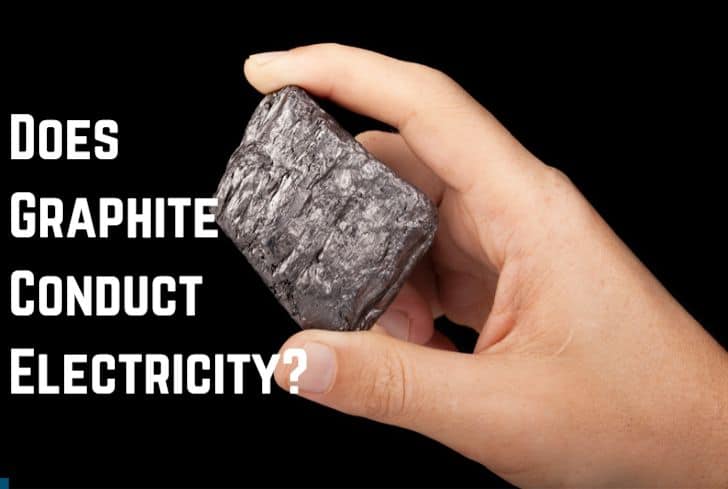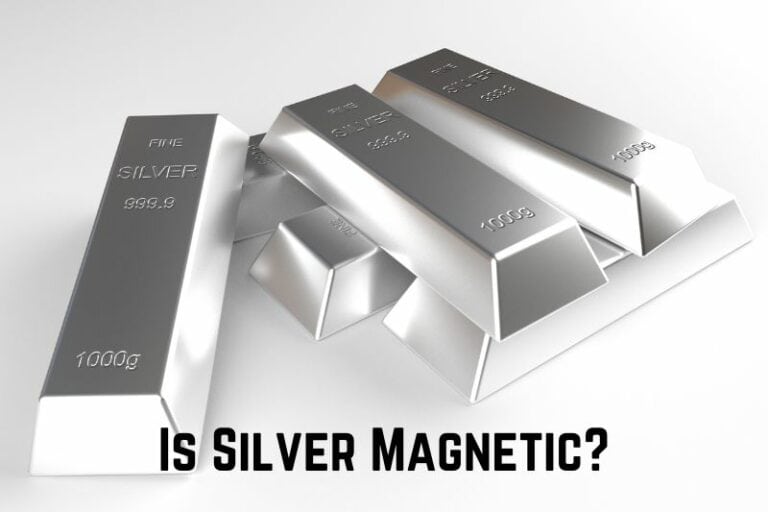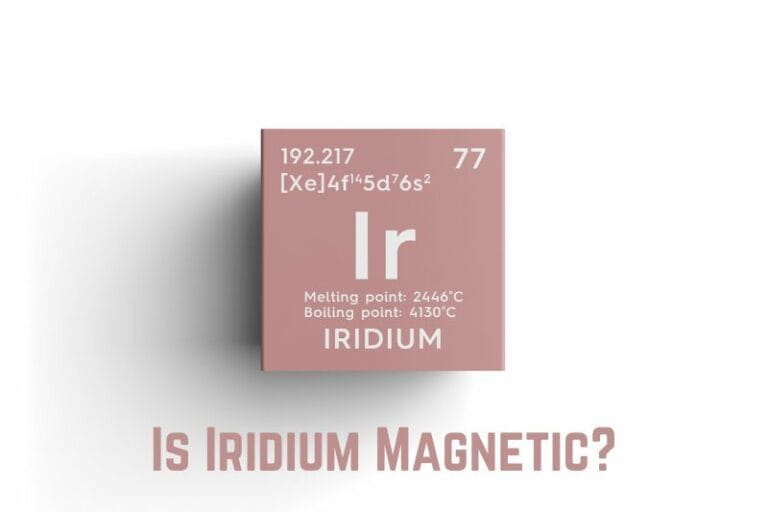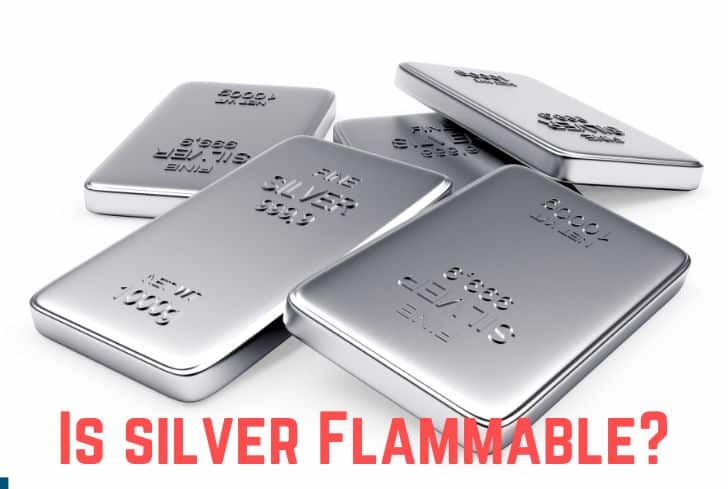Is Air a Heterogeneous or Homogeneous Mixture? (Answered)
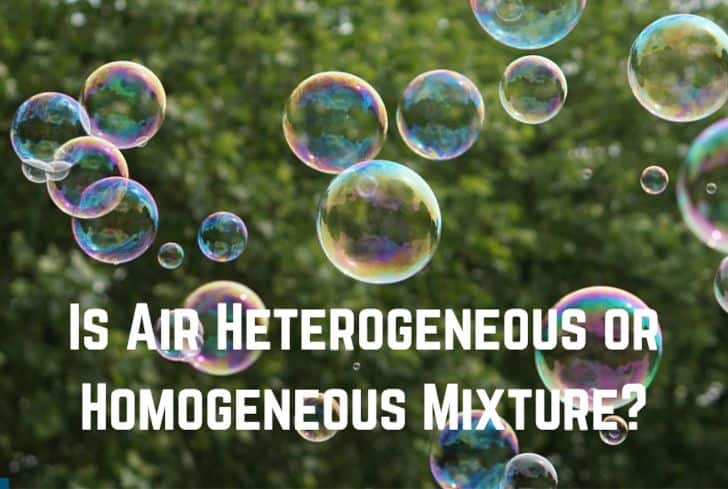
Air is everywhere. We couldn’t imagine living on a planet with no air to breathe. Though it is not visible, it has so many chemical properties that are sometimes confusing. Understanding some of the common facts that define air is crucial to know its properties.
This brings us to the all-important question. Is air a heterogeneous or homogeneous mixture? Further, what are heterogeneous and homogeneous mixtures? Let’s try to answer these questions in the simplest but most detailed way. Hang on for more!
Read: Is Motor Oil Homogeneous or Heterogeneous?
Is Air a Homogeneous Mixture?
Air spreads uniformly around the atmosphere we live in. Though it has a mixture of gases forming its composition, the air is a homogeneous mixture. Even using many mechanical methods, you cannot separate the constituents of the air mixture. Thus proving, the air is homogeneous in nature.
With air containing many gases at once, the components are always spread uniformly throughout. All the gases present in the air are of single phase only. This shows that it has no other phase, and the mixture will not have any other composition.
Further, whenever you analyze air at any part of the atmosphere, the composition will be the same. This means that upon calculation on any part of the earth, the major gases that make up air will have the same proportion. Putting these together, it is clear that air is a homogeneous mixture.
Why is Air a Homogeneous Mixture?
Air is a gaseous mixture when it comes to the state of matter. Typically, the air has different gases namely Nitrogen – 78.09%, oxygen -20.95%, argon -0.93%, and carbon dioxide – 0.04%. Further, it has water vapors too. Sometimes, you can define a homogeneous mixture when it contains only one state of matter. Thus, on that point, the air is simply homogenous.
Once a mixture has uniform materials that are the same all the way, the mixture is homogeneous. Similarly, in an air mixture, none of the components have different phases. Though air has many constituents, it spreads evenly everywhere and the composition is hard to separate. Thus, whatever the method employed, you cannot separate the constituents in the air thus making it homogeneous.
Whereas in a heterogeneous mixture, the components have different properties, and separation is possible. Also, another point to note is that air does not differ and whenever measured at any place, the constituents remain the same.
What are Homogeneous Mixtures?
A mixture forms when one or more components mix together. Homogeneous mixtures are the ones that have constituents that are uniform throughout the mixture formed. For example, air, water, steel, detergents, etc are some of the popular homogeneous mixtures present on earth.
Moreover, one experiment that defines a homogeneous mixture in layman’s terms is the saltwater mixture. Take one spoonful of salt and mix it in a glass of water. As soon as you mix salt in water, the particles begin to disintegrate and dissolve in water. However, once the salt goes inside the water, you cannot distinguish the salt particles.
In other words, salt is spread uniformly across the water. This defines a homogeneous mixture.
Another way to explain homogeneous mixtures is the population of a nation. Here, when considering a country, people of the same race and culture are a homogeneous mixture. Though the word “homogeneous” is commonly seen in a scientific context, this example will help us understand the concept more vividly.
What are Heterogeneous Mixtures?
The opposite of a homogeneous mixture is a heterogeneous one. In the case of heterogeneous mixtures, the mixture can have different components that do not have the same state of matter. In other words, from a heterogeneous mixture, you can easily separate the constituents.
In a heterogeneous mixture, you cannot find any component that spreads uniformly. While you can mix many components together to form a mixture, you cannot have anything in the same proportion. As you can separate the mixture’s ingredients, there is more than one phase for every constituent in a heterogeneous mixture.
Some examples of a heterogeneous mixture are sand, cement, soil, etc. To give an easier example, you can consider a bowl of a hearty salad. You include many vegetables, leafy greens, sauces, salt, pepper, etc to make the salad. Here, each one is separate and does not combine with one another. Also, when you take one ingredient out, the other components are still separate.
Some other examples that help understand the concept of a heterogeneous mixture are cereal in milk, orange juice with pulp, salt, and pepper, chocolate chip cookies, etc.
Another example from life that shows a heterogeneous mixture is blood. While looking through a microscope, you can find red blood cells, white blood cells, platelets, and plasma all separate from each other. Further, none of them mix, and this enables us to find out the crucial properties needed to make decisions in medical science.
What are an Element, Compound, and Mixture?
Element
One can find elements in almost every matter in the universe. The periodic table has over 100 elements. Further, this brings us to the definition of an element. Elements have only one atom in their substance.
One of the best characteristics of an element is that it is not breakable into simpler elements or substances by using both physical and chemical methods. Further, elements can exist as molecules also.
Elements are pure and are not separable into any other substance. A few of the immediate examples of elements are iron, oxygen, hydrogen, etc. While there are many elements in our universe, many of them have specific properties that are useful in many industries across the world.
For example, copper is an important element used in wires as they withstand the conduction of electricity. Similarly, you can consider aluminum which is widely seen in kitchen foils and vehicle body making.
Moreover, metals are also examples of elements. Rocks carry gold metal and diamonds are a form of the element carbon. You can refer to the periodic table to understand that there are 118 elements in total and many of them are metals thereby called elements.
Compound
The layman’s definition of a compound is that it consists of two or more elements mixed together. Generally, the compound forms through chemical reactions only and not by physical means. Also, the elements mixed are always done in a fixed ratio.
However, the compound formed by its elements has totally different properties from that of its elements. This means that each of the compounds has a self-standing chemical formula. On that note, the first example that comes to mind is water (H2O).
While physical methods do not work in breaking a compound, you can use a chemical method to bring the elements in a compound apart. Unfortunately, some elements mix together through a method called filtration. After this, separating them is not possible.
You should note that the periodic table does not have compounds listed on them. It has only elements, but we can mix together two or more elements to form a compound.
So, the most popular examples of a compound are water (H2O), carbon dioxide (CO2), Sodium Chloride (NaCl), Baking Soda (NaHCo3) or Sodium Hydrogen Carbonate, and so on.
Mixture
A mixture takes up a formulation formed with the help of compounds or elements. In this case, only physical intermingling forms mixtures and no chemical reaction takes place. Moreover, physical methods are useful in separating the components that make up a mixture.
As for the properties of a mixture, it mimics the same of its constituents and thus mixtures are easily defined through their elements or compounds. To understand better, let us consider the mixture of sand and water. In this example, it is well known that the ratio need not remain fixed and for different uses, the mixture will vary. To be specific, any amount of sand is up for mixing with water to form a water-sand mixture.
As only physical methods are in place to form a mixture, its constituents are also separated through physical means. For example, let’s take the sand-water mixture. If you pass the mixture through a filter, you can find the sand particles standing alone in the filter. This shows that the mixture is separable.
Similarly, you can take the salt water as a mixture and pass the solution through a distillation process to bring out the salt in the mixture. Some of the most known examples of a mixture are air, crude oil, seawater, gunpowder, and more.
Is Dusty Air a Heterogeneous or a Homogeneous Mixture?
Since dust mingles with air and is not the same in every place when measured or taken for evaluation, dusty air is a heterogeneous mixture. Besides, when dusty air is put under a microscope, the dust particles are visible and thus making it clearly a heterogeneous mixture.
Also, microscopically dusty air has a change of phase from being a gas to becoming a solid. In heterogeneous mixtures phase change for components happens. Moreover, when taken for evaluation at different locations, dust may not be of the same proportion or may even not be there. This again signifies the property of a heterogeneous mixture.
Moreover, you can use some physical methods to clean out dusty air, and since the filtration method helps in this process, it carries the term heterogeneous. Thus, only pure air is homogeneous, while dusty air is heterogeneous.
Final Thoughts
In summary, the air is a homogenous form when it is of the purest nature. No other foreign particle should be present besides its original form of gases and water vapors when being a homogenous mixture.
However, when dust or other pollutants come in contact with air, it becomes a heterogeneous mixture thereby altering the original properties of pure air. Also, homogeneous air does not require any filtration and thus none of its components are separable. Thus, it is always suitable to breathe a pure homogeneous air mixture.


